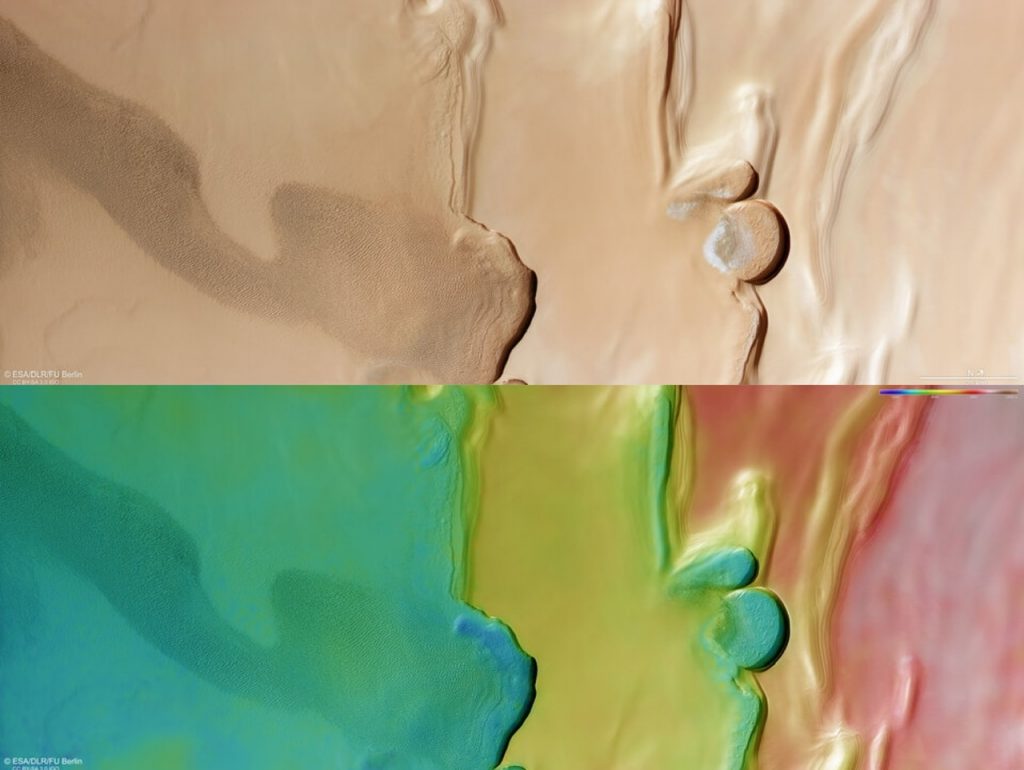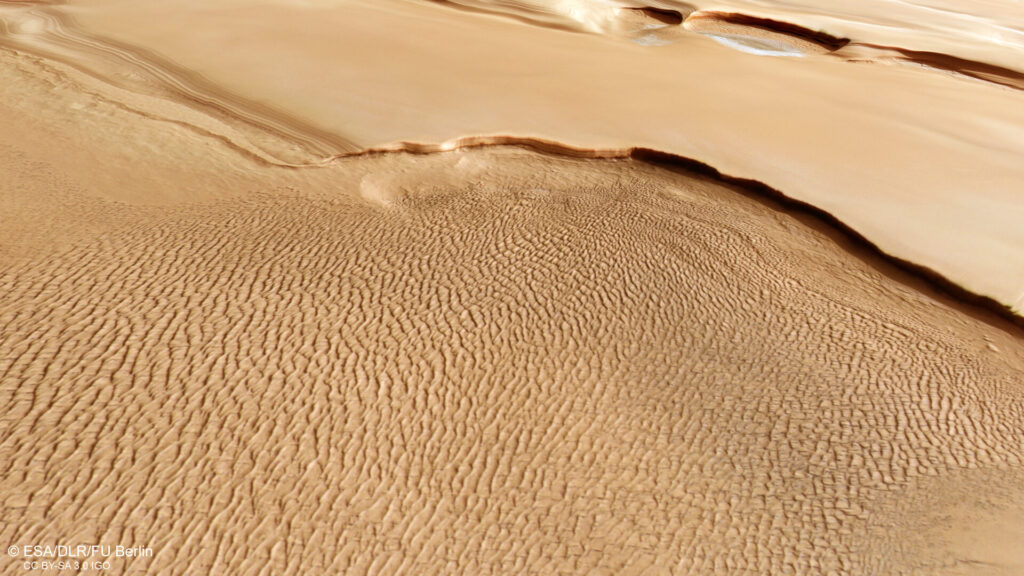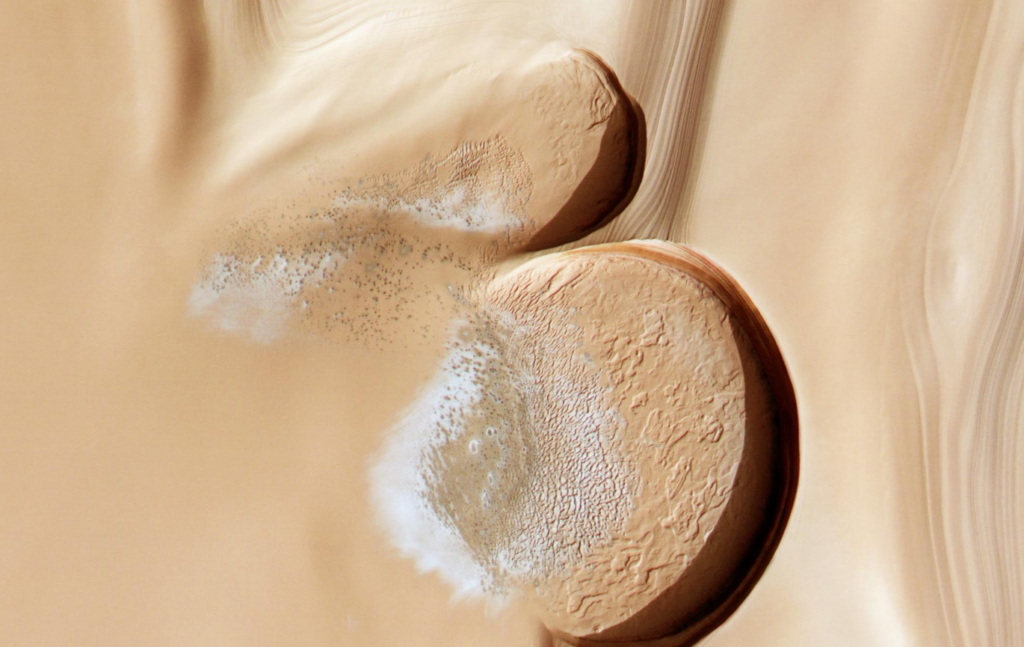The Mars Express spacecraft studying Mars has transmitted images of the planet’s north pole. They show a place where huge sand dunes meet ice cliffs.

As on Earth, polar caps are located at the poles of the Red Planet. However, they have a completely different structure. Their visible part consists of a thin layer of dry ice, which is formed in winter as a result of the freezing of carbon dioxide from the Martian atmosphere. It disappears when spring comes.
The main part of the Martian polar caps is hidden under the surface. It consists of alternating layers of water ice and dust that go hundreds of meters deep. Each such layer contains extremely valuable information about the history of Mars, telling how the planet’s climate has changed over the past few million years.

The area of the surface photographed by Mars Express is located at the junction between two regions of Mars. In the right part there is the Planum Boreum occupying the pole. It is higher than the surrounding area due to the powerful deposits of ice and dust.
On the left side of the image, an extensive strip of sand dunes dominates, stretching for more than 150 km. This smooth area has no obvious signs of erosion and craters, which indicates its geological youth.

These two areas, which are so different from each other, are separated by escarpments (steep slopes). On one of them there are two semicircular cliffs, the largest of which is about 20 km wide. They are occupied by frost-covered sand dunes. The scale of the cliffs can be seen by the shadows they cast on the surface below. Their steep, icy walls reach a kilometer high.
You can also read about how electrodes in spacesuits will protect astronauts from Martian dust.
According to https://www.esa.int
Follow us on Twitter to get the most interesting space news in time
https://twitter.comne/ust_magazine


